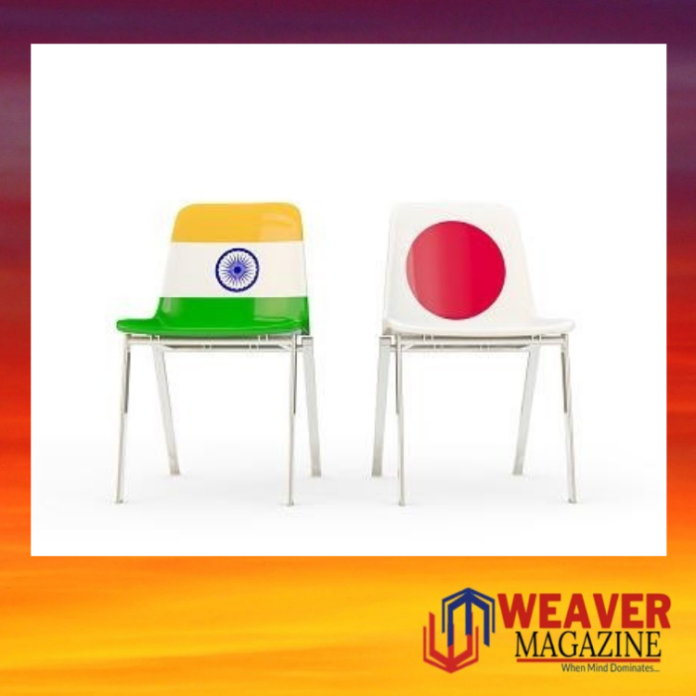Our motherland, a country where we are born, it always has a special place in our hearts. All the other countries are “Foreign lands”; unfamiliar, unknown, all the other places have a mystic touch to it until we explore and understand. In this era of globalization, the world is a small village and we are more connected to people across the globe than we were ever before and if we start a discussion with citizens of other countries as to how much our countries differ, we’ll eventually end up knowing that we are not so different. What happens when the land of mystery and diversity meets the land of the rising sun?
Let’s find out what transpires when Miss M from India and Miss H from Japan have a conversation about their countries….
MISS M: “Why is India popularly known as a land of mystery and diversity? – Let’s dive into the question at the outset. India is an ancient land, that dabbles itself in an absorbing history. Over thousands of years, geographical, spiritual, and past influences have entwined together to form a colorful fabric of Indian culture; one that is amongst the oldest known to humanity. The diversity is reflected in the fact that the country has nearly 17 major languages and approximately 900 different dialects. The region of the country decides upon the art, music and dance, traditions, rituals, recreation, sports, and cuisine, and all of it adds different flavors to the journey of exploring the country. In India, each individual can come away with their unique experience and that’s why travelers still find such a country to be mysterious as all marvel at the fact that how can a country have such a strong bond with so much diversity its folds.”
MISS H: “That’s interesting and very different from Japan, where we have only one official language, Japanese. Now, although there are several theories as to why Japan is called the land of the rising sun, the answer definitely has something to do with China. In ancient times, China developed an advanced civilization including sophisticated writing systems as many as 2000 prior to Japan did. As a result, the early accounts about Japan were often described from the Chinese perspective. Japan is located just east of China, so it stands to reason that they thought that the sun rises from Japan. In fact, Japanese people do not call their country Japan, but they call it “Nippon (日本)”, which translates into the land of the rising sun.”
MISS M: “Let’s talk a bit about the cultures of ushering in and celebrating a new year. For nearly two hundred years Britishers ruled over India and hence the country and its traditions do hold a place for how the colonizers did particular things. Like most of the countries around the world, people of India usher in the New Year on January 1st but the country’s national calendar is based on the calendar from the Saka Era, with Chaitra as its first month and a normal year of 365 days. This was adopted from 22 March 1957 along with the Gregorian calendar for official purposes. Apart from this every region and religion thriving in India has its own day marked for the commencement of a new year. Mostly these new years are related to the harvesting period of the farmers as it becomes an occasion for celebration. For example, Ugadi, celebrated on the 8th of April is the Telegu New Year, Gudi Padwa, a New Year day for Maharashtrians and Konkanis, is also celebrated on the 8th of April. Baisakhi is the New Year day for Punjab and is celebrated on the 13th of April while Poila Boishakh, on the 14th or 15th of April is considered the first day of the Bengali calendar. There are many more such new year day celebrations across India upholding the customs and traditions of a community.”
MISS H: “It sounds as if in India, we can experience New Year’s celebration at any time! Well, an interesting thing about Japanese New Year’s celebrations is that it starts before the New Year actually comes. For instance, Japanese people traditionally eat “Toshikoshi-soba”, Japanese noodles, on the night of December 31st to prepare for the New Year. Also, most people in Japan, if not all, send New Year cards called “Nengajo”. These cards are delivered exactly on Jan. 1st if you post them by December 25th, so postmen are very busy during this season. Once the New Year comes, we enjoy special cuisine called “Osechi”, which includes various kinds of Japanese traditional food; each of them has special meanings. For example, as the shape of shrimps looks like an old person with the bent back, we eat it praying for longevity. Although the Japanese people generally have no religion, going to nearby shrines and praying for their health and prosperity on New Year’s Day is popular. According to the Japanese old calendar, a lunar calendar, the New Year starts on Feb.4th. Today, Feb.4th remains as “the first day of spring”, though it is still extremely cold with the temperature of approximately 5 degrees Celsius in Tokyo.”
MISS M: “How about traditional dresses? In India, there are 28 states and 8 union territories and for every state, one can find a traditional outfit associated with it. Though in the mainland India the traditional outfit for women is generally a saree, ghagra choli, or salwar kameez, and the men are generally clad in lungi or pajamas and kurta but even the style of wearing these clothes differ as we move from state to state even the names of the dresses change according to the state where the people live in. For example, in the cold region of Jammu and Kashmir, the traditional wear of the state is common to men and women and is known as Pheran. Women in Kerala wear a traditional off white sari with a golden border called the Mundum Neriyathum and the male folks in Kerala wear a mundu that can be interpreted as the state’s version of a Lungi. In Gujarat the womenfolk wear the traditional dress called the Chaniyo Choli; it is a three-piece attire with a ghagra, choli, and a head veil while the Gujarati men wear dhotis or churidar pajamas and kurtas or bandis, traditionally called Chorno and Kediyu that are paired with rich colored headgear as the turbans. There are so many traditional dresses in India that a deep study or research might be needed to explore all of them. What about the traditional dress of Japan?”
MISS H: “The most famous Japanese traditional dress, “Kimono”, used to be worn on a daily basis. However, today, Kimono is only for special occasions such as weddings, graduations, and rites of passages. Putting on Kimono by oneself is extremely hard, so there are even schools to teach people how to wear it! But Kimono continues to attract us with its beautiful patterns including flowers and birds. Another attire, “Yukata”, initially looks similar to Kimono, but they are very different. For one, while Kimono is made of silk and relatively heavy, Yukata is made from light cotton and is suitable for Japanese sweltering summer. As a result, Kimino can be as expensive as 6000 US dollars, whereas Yukata is far more affordable. This is why most people do not have their own Kimono and simply rent it if necessary.”
MISS M: “Let’s talk a bit about our education system. The modern school system that was brought to India, was originally prepared by Lord Thomas Babington Macaulay in the 1830s, it also included the English language in our curriculum. There are four levels of the school system in India: lower primary (age 6 to 10), upper primary (age 11 and 12), secondary (age 13 to 15), and higher secondary (17 and 18). The lower primary school is divided into five “standards”, upper primary school into three, high school and higher secondary into two each. Students largely have to learn and face a common curriculum except for some regional changes in their mother tongue till the end of high school. Some amount of specialization is possible at the higher secondary level. Students throughout the country have to learn three languages i.e. English, Hindi, and their mother tongue except in areas where Hindi is the mother tongue. There are broadly three streams or boards in school education in India. Two of these boards are managed at the national level, of which one is under the Central Board of Secondary Education (CBSE) and the second central scheme is under the Indian Certificate of Secondary Education (ICSE) which seems to have started as a substitute for the Cambridge School Certificate. Furthermore, each state in the country has its own Department of Education that runs its own school system comprising of its own textbooks and evaluation system hence the state boards form the third stream in school education in our country. Although the National Education Policy (NEP) 2020 has proposed some major changes in the education system of the country which will be implemented in a span of 10 years.”
MISS H: “Like India, there are four levels of school in Japan though there is a slight difference: elementary school (age 7 to 12), junior high school (age 13 to 15), senior high school (age 16 to 18), and universities (age 19 to 22). Attending elementary school and junior high school is mandatory, meaning that all people in Japan undergo education for at least 9 years. In high school, most students have to choose whether they specialize in humanity courses or science courses. They also have to decide what to major in before entering universities, and the entrance exams vary from department to department. As for language education, we used to start learning English after entering junior high schools. But in 2019, as globalization advances, the Ministry of Education, Culture, Sports, Science, and Technology (MEXT) made it mandatory for elementary schools to offer English classes. One thing that cannot be ignored when talking about education in Japan is “Juku”, which means cram school in Japanese. It is common among students to attend cram schools and prepare for the entrance exam.”
MISS M: “Moving forward, let’s discuss our military setups. India has one of the longest military histories, dating back quite a few millennia. The first allusion to such armies is found in the Vedas as well as the epics Ramayana and Mahabharata. The Indian Armed Forces are the military forces of India comprising of three professional uniformed services: the Indian Army, Indian Navy, and Indian Air Force; manning the three aspects of the country, namely land, water, and air. There is a Ministry of Defence (MoD) of the Government of India which has the responsibility of managing the Indian Armed Forces. With over 1.4 million active personnel, this is the world’s second-largest military force. Moreover, the Indian Armed Forces are the world’s largest volunteer army. The military is also allotted a huge budget which is the third-largest defense budget in the world. The 2015 Credit Suisse report, placed the Indian Armed Forces as the world’s fifth-most powerful military, in fact just behind Japan; whereas the 2020 Global Firepower Report listed India as the fourth most-powerful military. The formal Supreme Commander of the Indian Armed Forces is the President of India, while the actual control lies with the executive headed by the Prime Minister of India.”
MISS H: “Unlike the majority of the countries in the world, Japan currently does not have any form of military. In fact, article 9 of the Japanese constitution says that Japan forever renounces war as an instrument for settling disputes and will never maintain “land, sea, or Air Force for another war potential.” If you feel as if you’ve seen the Japanese “army”, it is Japan Self Defence Force (JSDF), which was organized by the Defence Agency in 1954. In 1992, Japan participated in the United Nations Peace Keeping Operation (UNPKO) for the first time, and JSDF has engaged in various activities including refugee assistance operations and repairing infrastructure. JSDF also contributes to the local community especially when natural disasters happen. Its work is extremely important as Japan often experiences huge earthquakes like the one in 2011.”
Conclusion: With all the discussion we had, one thing is clear that there is so much to explore in this world and when we exchange ideas, we get enriched by the experience. Today the world has become technology savvy and with a click, we can gather so much information in a heartbeat but the experience of actually listening to the experiences from a person living in that world is amazing. Countries and borders may differ, traditions and cultures may differ but they all teach us that we are humans and those cultures and traditions are in place to teach us valuable lessons in life and to keep the flame of humanity glowing. We may think that people from other countries are different but eventually, we all are humans and we have more in common than we know.









